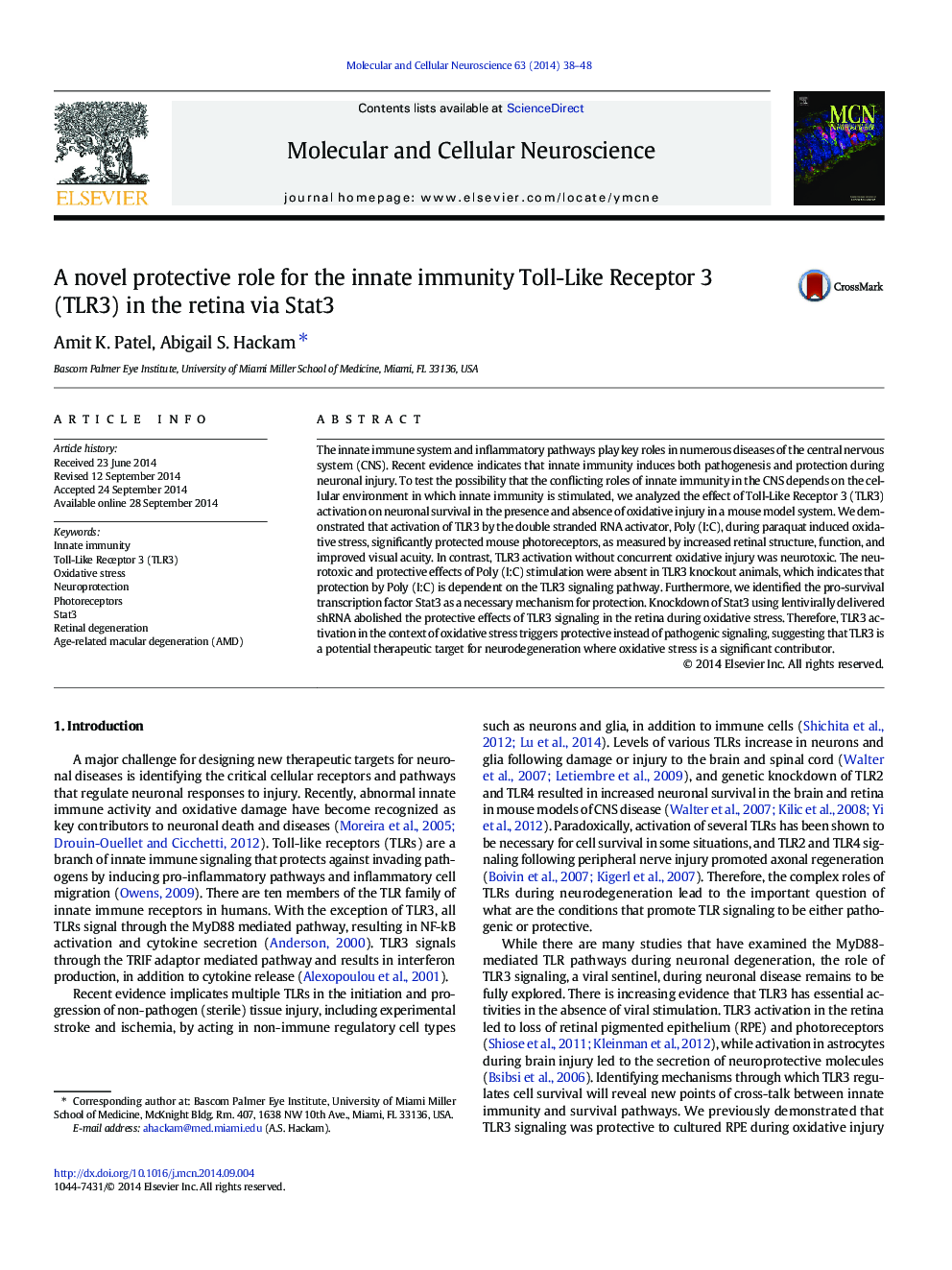| Article ID | Journal | Published Year | Pages | File Type |
|---|---|---|---|---|
| 2198457 | Molecular and Cellular Neuroscience | 2014 | 11 Pages |
•TLR3 activation protects photoreceptor structure, function and visual behavior during oxidative stress.•TLR3 induces neuroprotection during oxidative stress through the Stat3 pathway.•Innate immunity acts as a double-edged blade in the context of injury.•TLR3 is a potential therapeutic target for neurodegenerations involving oxidative stress.
The innate immune system and inflammatory pathways play key roles in numerous diseases of the central nervous system (CNS). Recent evidence indicates that innate immunity induces both pathogenesis and protection during neuronal injury. To test the possibility that the conflicting roles of innate immunity in the CNS depends on the cellular environment in which innate immunity is stimulated, we analyzed the effect of Toll-Like Receptor 3 (TLR3) activation on neuronal survival in the presence and absence of oxidative injury in a mouse model system. We demonstrated that activation of TLR3 by the double stranded RNA activator, Poly (I:C), during paraquat induced oxidative stress, significantly protected mouse photoreceptors, as measured by increased retinal structure, function, and improved visual acuity. In contrast, TLR3 activation without concurrent oxidative injury was neurotoxic. The neurotoxic and protective effects of Poly (I:C) stimulation were absent in TLR3 knockout animals, which indicates that protection by Poly (I:C) is dependent on the TLR3 signaling pathway. Furthermore, we identified the pro-survival transcription factor Stat3 as a necessary mechanism for protection. Knockdown of Stat3 using lentivirally delivered shRNA abolished the protective effects of TLR3 signaling in the retina during oxidative stress. Therefore, TLR3 activation in the context of oxidative stress triggers protective instead of pathogenic signaling, suggesting that TLR3 is a potential therapeutic target for neurodegeneration where oxidative stress is a significant contributor.
